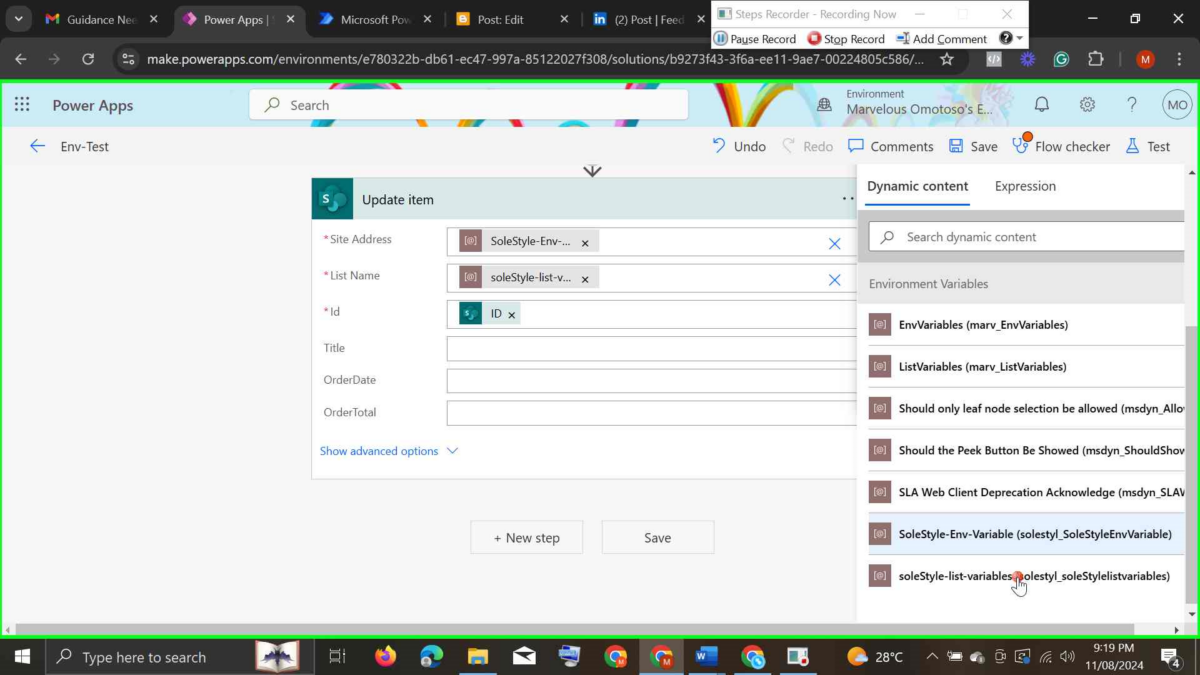
How to Use Environment Variables in Power Automate Flows: A Step-by-Step Guide
Introduction
Environment variables are an incredibly powerful feature in Power Automate, allowing you to create dynamic and flexible solutions. If you've ever faced challenges with hard-coded values in your flows, environment variables are here to simplify your work. In this article, we'll explore how to use environment variables step-by-step. If you're unfamiliar with what environment variables are, feel free to check out my previous blog post on environment variables for a comprehensive overview.
What are Environment Variables in Power Automate?
Brief Recap of Environment Variables
Environment variables enable you to define and store values that can be reused across different Power Automate flows, apps, or components within a solution. Instead of hard-coding values, you can create variables to represent them, making it easier to maintain and update flows.
Using Environment Variables in Power Automate Flows
Imagine you have a flow in your solution that retrieves data from a SharePoint list, and you need to share it with a colleague. By using an environment variable, you allow your colleague to easily switch to their own SharePoint list without manually editing the flow.
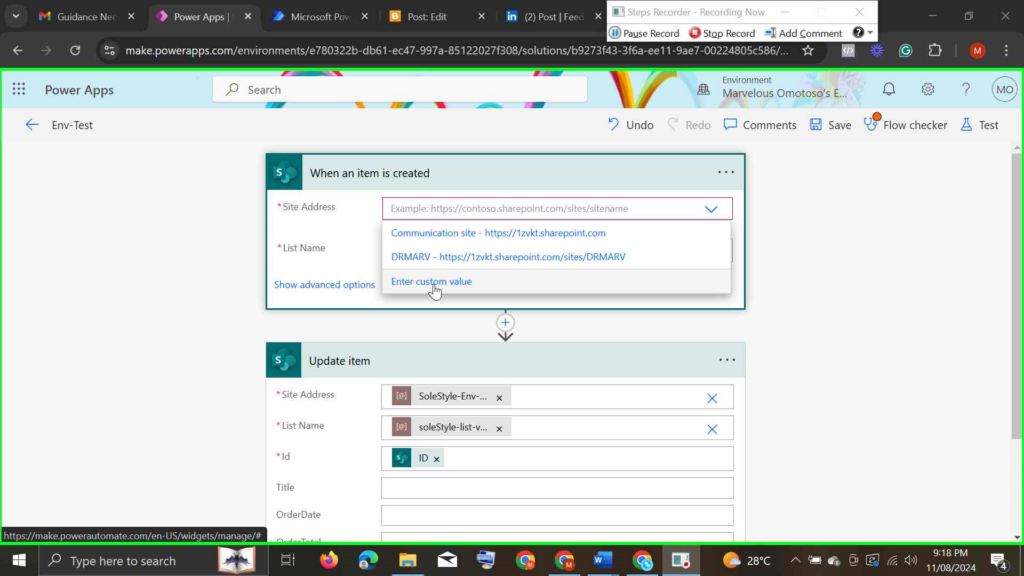
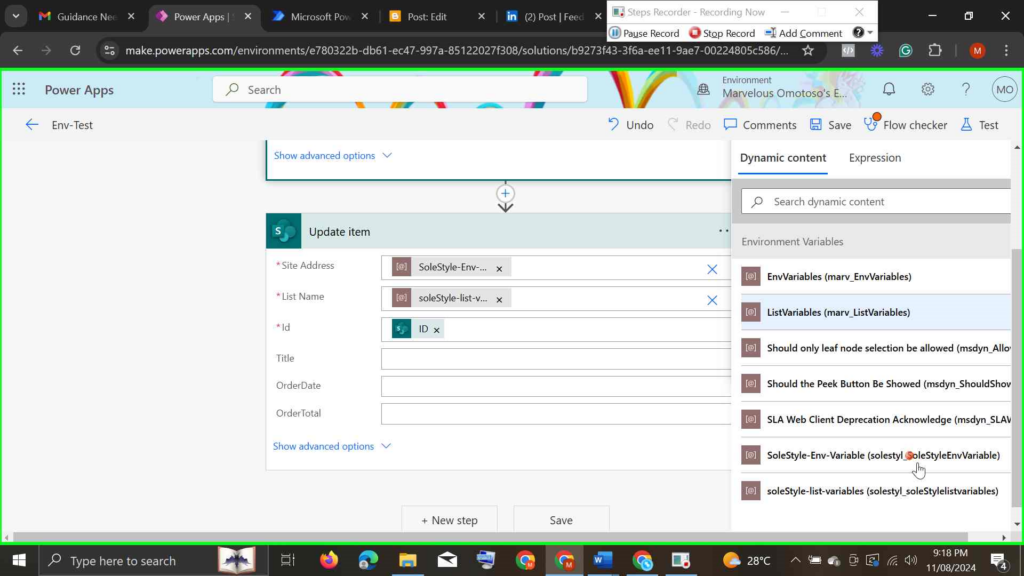
Learn how to create an Env Variable
Selecting an Environment Variable for SharePoint List
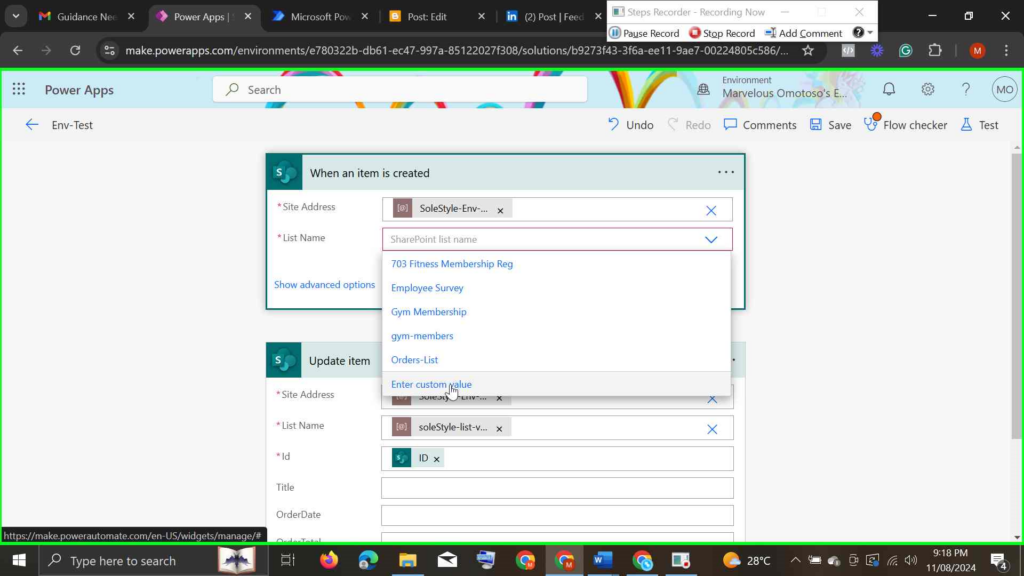
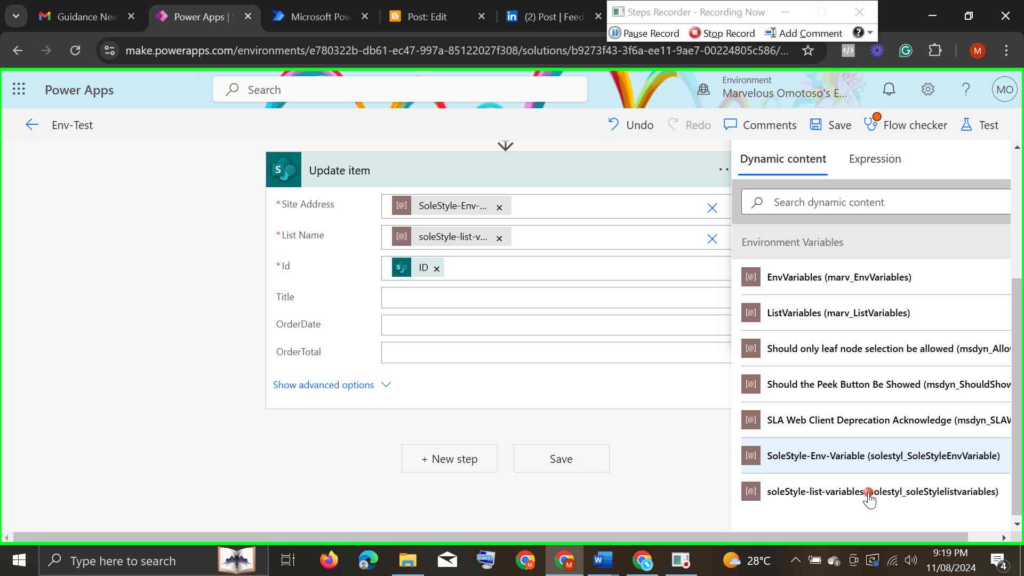
Learn how to create an Env Variable
Fianlly, Save and Publish your changes.
Conclusion
Environment variables offer incredible flexibility and maintainability to your Power Automate flows. By following this step-by-step guide, you can create scalable solutions that adapt to different environments with ease. Don't forget to explore my previous blog post if you're new to environment variables or want a deeper dive into their usage.
